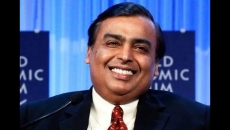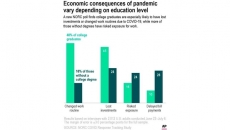For the millions of Americans who struggle to afford an unexpected expense, high-interest payday and online loans may seem like acceptable options despite the inherent risk.
But guidance issued by federal regulators in the spring could bring a competitor to small-dollar lending: banks. The guidance omits a previous suggestion from the Federal Deposit Insurance Corp. that loans from banks should have annual percentage rates of 36% or lower.
While some consumer advocates say a rate cap is a necessary consumer protection, researchers say banks can check a borrower’s credit and offer affordable loans — something payday lenders whose APRs often reach above 300% typically don’t do.
If your only option is a high-interest loan, no matter the source, take control by understanding the rate and monthly payments and choosing a lender that checks your ability to repay.
UNDERSTAND YOUR RATE
There is no federal interest rate cap on small loans of a couple thousand dollars or less, and bank regulators can’t impose one. But 45 states cap APRs on $500 loans, while 42 states have caps on $2,000 loans. Check the National Consumer Law Center’s fact sheet to see the APR cap in your state.
The NCLC advocates for a federal 36% rate cap. Associate Director Lauren Saunders says without one, high rates could permeate other credit products. Many lenders that offer APRs of 36% or lower tie your rate to how risky it is to lend to you, based on your credit history. If you’ve had trouble making loan or credit card payments in the past, the lender may see you as a high-risk borrower and assign a rate close to 36%.
APRs are useful for comparing loan products, but seeing dollar amounts can help consumers evaluate whether they can make the required payments on an installment loan, says Alex Horowitz, senior research officer with The Pew Charitable Trusts.
If the only loan you can qualify for has a rate above 36%, calculating the monthly payments can help you understand what you can afford.
A bank would have to charge $50 to $60 on a $400 loan repaid over three months to make it profitable, Horowitz says. That’s an APR of about 75% to 90%. A 2017 study from Pew found that many consumers think that’s a fair rate.
Small-dollar lending is currently dominated by online lenders, says Leonard Chanin, deputy to the chairman at the FDIC.
But U.S. Bank’s “Simple Loan” offers a rare example. The loan usually has an APR of about 71%. Borrowers with autopay pay a $12 fee for every $100 borrowed and repay the loan over three months.
Chicago-based online lender OppLoans provides loans to borrowers with bad credit and has APRs as high as 160% in some states. CEO Jared Kaplan says it’s costlier for his company to acquire and underwrite customers, which leads to higher rates.
“Whether (your APR is) at 79, 99 or 160, you’re dealing with a risky customer base and the price should justify that risk,” he says.
CHOOSE A LENDER THAT CHECKS YOUR FINANCIAL DATA
Lenders that don’t determine your ability to repay using information like your income, existing debts and credit information tend to offer high-interest loans with short repayment periods, making them difficult to pay off and trapping you in a cycle of debt.
Banks and other lenders that can access your bank account information and payment history can determine whether you can afford the loan.
Applicants for the Simple Loan must have a checking account for six months and have direct deposits sent to the account for three months before they can apply, says Mike Shepard, U.S. Bank’s senior vice-president in consumer lending.
That ability to underwrite an existing customer, rather than someone it doesn’t already know, helps make a bank loan affordable for consumers, Horowitz says.
OTHER WAYS TO EVALUATE A SMALL LOAN
Aside from low APRs and a review of your ability to repay, here are some things to look for if you need a high-interest loan.
— Full amortization. Monthly payments should pay down both principal and interest on a loan. Interest-only payments don’t reduce the loan’s principal, so interest continues to accrue at the same rate. Check the loan’s amortization schedule before you agree to borrow.
— Credit reporting. The lender should report your monthly payments to at least one — and ideally all three — of the major credit bureaus. If you make your payments on time, this reporting can improve your credit.
— No origination or prepayment fees. Origination fees, sometimes called administrative fees, and prepayment penalties help the lender make money, but they have little benefit for you.






